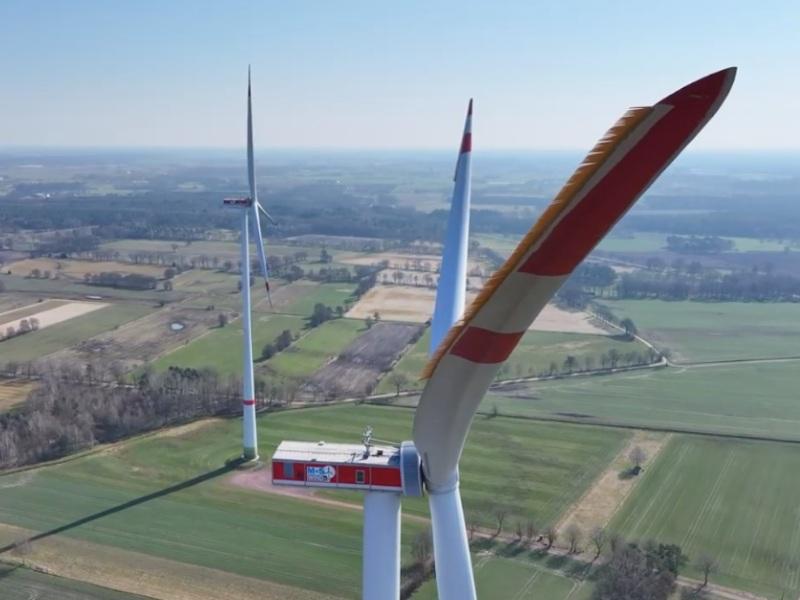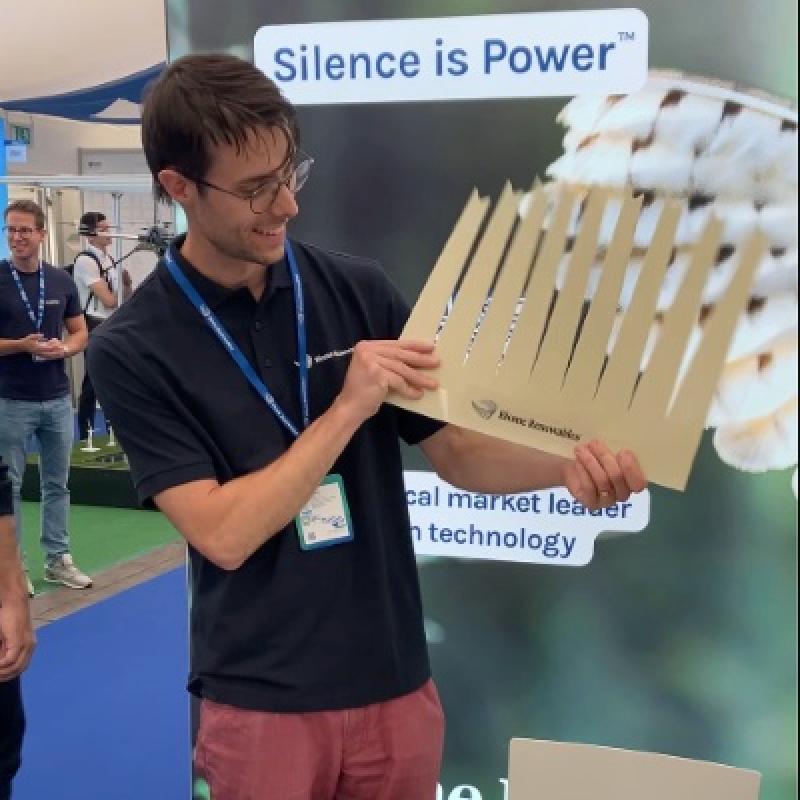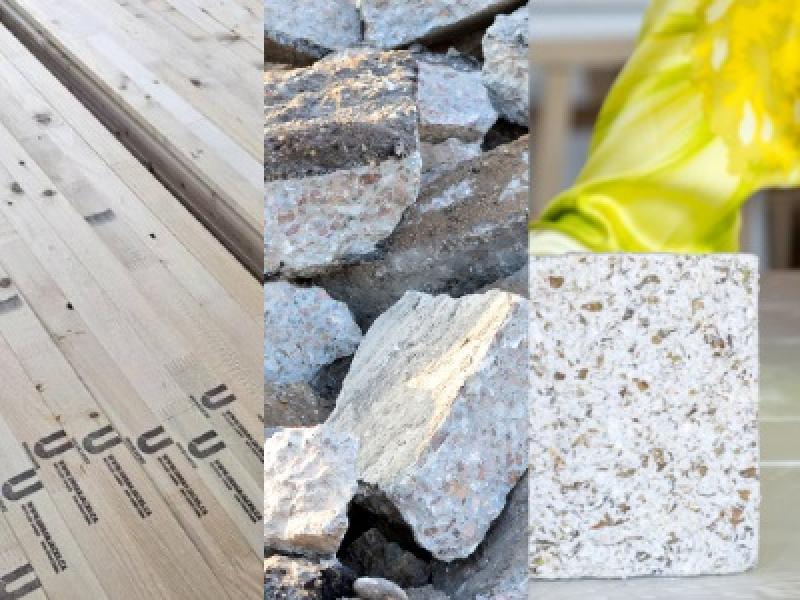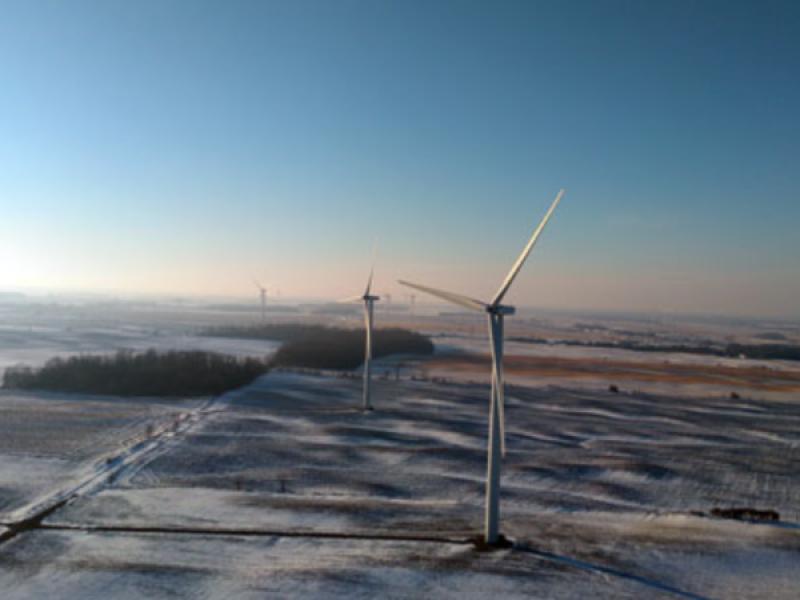
To design quieter, more efficient wind turbines, Toronto-based Biome Renewables Inc. is taking a cue from nature with an innovative addition to the blades that mimics how owls achieve near-silent flight.
Named FeatherEdge, it is a technology applied to the trailing edge of the blades. Resembling a very large fine-tooth comb, the design mutes the aerodynamic noise by up to 50 per cent compared to traditional designs. Besides being quieter, it can also raise the annual energy production of a turbine by three to six per cent.
The technology can address a common concern with wind turbines. While increasingly popular for generating clean energy, the movement of air along the turbines creates a constant, low-frequency “whoosh” or hum. People have blamed the din for causing headaches, anxiety, depression and sleepless nights. (A 2019 study by Health Canada did not find a connection between exposure to wind turbine noise and the alleged health issues.)
Founded in 2015 by CEO and CTO Ryan Church, Biome is a “biologically inspired technology firm,” he said in an interview with Sustainable Biz Canada. The company takes its ideas from the shapes and features of animals and plants to enhance the performance of renewable energy infrastructure.
FeatherEdge is shaping up to be a resounding success for Biome, he added, with Church expecting the technology to find widespread commercial use next year.
Borrowing from birds
A designer with a background in biology and a passion for fluid dynamics, Church said the idea for FeatherEdge stems from recognizing wind energy is “in the right place of a technology cycle for disruption.”
The development of the technology was influenced by a documentary he watched that compared the noise generated by the flight of a pigeon, a peregrine falcon and an owl. Church learned owls can stealthily hunt prey because of the shape of their wings and the physics of their flight. He applied that knowledge to his company’s product.
The trailing edge serrations on the blades of wind turbines are not new, but the saw-like design tends to be short, stubby and stiff, Church said, making them easy to break or fall off. By comparison, FeatherEdge’s serrations are longer and more flexible, like feathers. The serrations also come in more sizes than industry-standard serrations, which optimizes the performance of a turbine, he explained.
To examine the efficacy of FeatherEdge, Biome commissioned three independent measurements. The tests found it reduced the sound power of a variety of turbines by two to three decibels compared to standard serrations.
One of those tests was conducted by U.K.-based engineering firm Hoare Lea. It found at a moderate wind speed where a turbine would normally reach its maximum noise level, the sound was reduced by six to eight decibels at the key frequencies of 200 to 800 hertz. Hoare Lea called the result “very large and unprecedented.”
The “whoosh” sound effectively vanishes with the use of FeatherEdge, Church said, “enabling that acceptance of wind power.”
Quieter turbines means developers can add 20 to 30 per cent more wind capacity on a plot of land because of the reduced noise pollution to surrounding communities and increased noise budgets for future neighbouring wind developments, Biome says.
FeatherEdge projected to 'take off' in 2026

As of today, FeatherEdge is installed on 11 turbines. But going into 2026, Church said it will be used on hundreds. FeatherEdge has “taken off” this year he said, with Biome receiving many orders for the product from companies around the world.
The product is made by third party manufacturers, then shipped to Biome’s clients for installation on existing wind projects or to be affixed by turbine manufacturers. Biome also trains contractors to install FeatherEdge.
While not providing specifics on costs, Church said the company's customers have indicated they would be willing to pay more to install FeatherEdge on their turbines due to the increased development potential and boost to energy generation.
Europe has been Biome’s most successful market to date, particularly Germany and France. Closer to home, Church anticipates growth in Ontario in 2026. Companies in Spain, Australia, Brazil and the U.S. have also signalled interest in FeatherEdge, he continued.
Drawn to Biome’s potential, German wind turbine manufacturer Enercon signed a memorandum of understanding with the company to explore the potential of integrating FeatherEdge on its equipment.
While FeatherEdge is the company’s focus for now, Biome is developing another innovation for the renewable energy sector.
Named PowerCone, it is based on the movement of a falling maple seed and the kingfisher, which move through fluids like air and water with little resistance. Biome is aiming to address the energy loss that affects wind and water turbines with PowerCone, toward the goal of generating more electricity.










